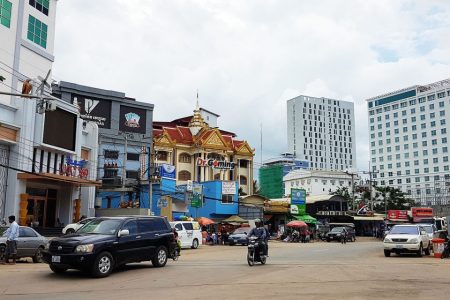Fluid dynamics may be the last thing on your mind when you sit down for breakfast in the morning, but a new study reveals how applying this science could get you your morning coffee for less, reports NewScientist.
Coffee consumption is on the rise, and with climate change wreaking havoc on the narrow geographical band in the sweet spot to produce this beloved bean, prices are picking up too. Coffee reached an all-time high this year, surpassing the US$4 mark for the first time to peak at US$4.30 in mid-February.
Saving on beans usually means compromising on flavour or strength, but researchers from the University of Pennsylvania have found the ideal technique for pour-over coffee that can produce the same cup of coffee with up to 10-percent fewer beans. Published in the April edition of Physics of Fluid, the paper outlines how the team assessed variations in flow rate and pour height to determine an extraction efficiency that could “help alleviate the demand on coffee beans worldwide.”
“Coffee is getting harder to grow, and so, because of that, prices for coffee will likely increase in coming years,” Arnold Mathijssen, an assistant professor of physics at University of Pennsylvania and study co-author, told NewScientist. “The idea for this research was really to see if we could help do something by reducing the amount of coffee beans that are needed while still keeping the same amount of extraction, so that you get the same strength of coffee.”
[See more: Producers taking advantage of high prices have dwindled Brazil’s coffee stockpile]
The process for making pour-over coffee is relatively straightforward – you place the brewer over a carafe and line it with a pre-moistened filter. Place the coffee grounds in the filter then slowly pour boiling water over the grounds, letting the coffee drip into the carafe below. But any experienced home brewer knows that slight tweaks to the coffee-water ratio, the pour rate and so on can affect how well your morning coffee turns out. The University of Pennsylvania team looked specifically at pour height and flow.
Unlike the average homebrewer, they weren’t restricted to studying opaque coffee grounds. The team also studied the movement of silica gel particles, imaged with a laser sheet and a high-speed camera, to fully understand the dynamics at work in making pour-over coffee.
They discovered an avalanche effect, best achieved by a thick, laminar-flow water jet from a high pour height of around 50 cm above the brewer. This combination allows the water to dig deeper into the coffee bed, recirculating displaced grounds and resulting in a stronger coffee with fewer beans.
The standard gooseneck kettle, a favourite of many pour-over aficionados, is an excellent tool for achieving both the height and strong, focused flow needed for this technique. Practice also helps. “First, try to be slow. Then lift [the kettle] up and go as slow as you can, but don’t let [the flow of water] break up,” Matthijssen told the publication. A broken flow doesn’t mix as efficiently and pouring from too high increases the risk of splashing yourself with scalding water. Slow and steady is best. “That’s the strategy that I would follow.”






